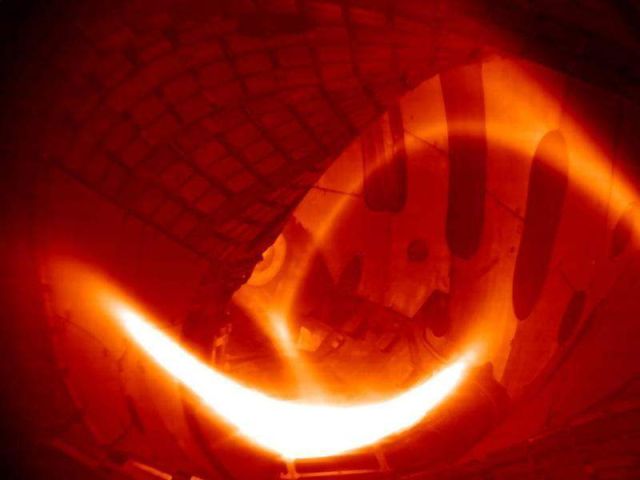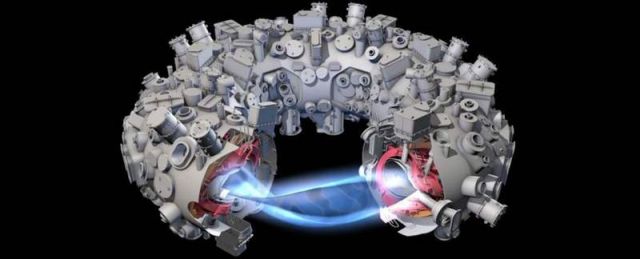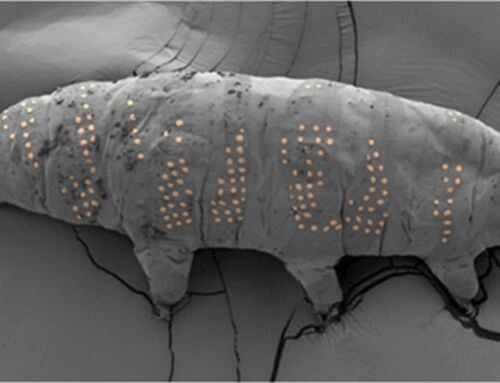‘Stellarator‘ nuclear fusion reactor successfully produced its first hydrogen plasma.
Germany’s ‘Stellarator,’ by recreating conditions found on the sun and other stars, just produced plasma using hydrogen, in a major test that takes us much closer to nuclear fusion.
Above: The first hydrogen plasma in Wendelstein 7-X. Credit IPP
The successful experiment it’s part of a global effort to harness nuclear fusion, a clean and ‘endless’ energy source.
The Wendelstein 7-X fusion device at Max Planck Institute for Plasma Physics (IPP) in Greifswald produced its first hydrogen plasma on 3 February 2016. This marks the start of scientific operation. Wendelstein 7-X, the world’s largest fusion device of the stellarator type, is to investigate this configuration’s suitability for use in a power plant.
Since the start of operation on 10 December 2015 Wendelstein 7-X has produced more than 300 discharges with the rare gas, helium. These served primarily to clean the plasma vessel. The cleaner the vessel wall, the more the plasma temperature increased, finally attaining six million degrees. In addition, plasma heating and data recording were tested, and the first measuring facilities for investigating the plasma were put into operation, viz. complex instrumentation such as X-ray spectrometers, interferometers, laser scattering and video diagnostics.
Project Head Professor Dr. Thomas Klinger, said:
“This makes everything ready for the next step. We are changing from helium to hydrogen plasmas, our proper subject of investigation.”
The first hydrogen plasma, which was switched on at a ceremony on 3 February 2016 attended by numerous guests from the realms of science and politics, marks the start of scientific operation of Wendelstein 7-X. At the push of a button by Federal Chancellor Angela Merkel, a 2-megawatt pulse of microwave heating transformed a tiny quantity of hydrogen gas into an extremely hot low-density hydrogen plasma.
Stellarator Nuclear Fusion Reacto. Credit IPP
source Max Planck Institute







Leave A Comment